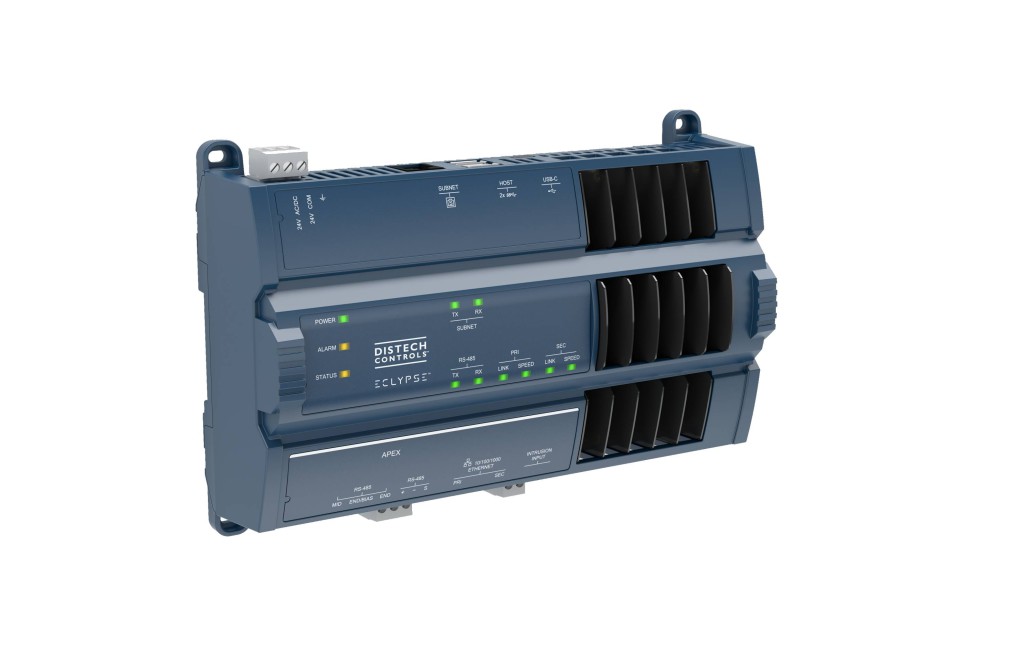AI and the smart buildings revolution

Charles Pelletier, Vice President, Product Management at Distech Controls, explains how product innovation that utilises AI technology to collect and respond to data is delivering highly efficient and human centric buildings.
Artificial intelligence (AI) shows extraordinary promise for transforming the world with its ability to compile and analyse vast amounts of information in real-time, apply reason and improve processes. Research by PwC UK, commissioned by Microsoft, estimates that using AI for environmental applications could contribute up to $5.2 trillion USD to the global economy in 2030.
However, the tremendous computational power required for AI processes could derail Net Zero pledges. Large corporations are rushing to embed AI into their processes to increase efficiency, improve the customer experience and lower costs. Many of these also have aggressive carbon reduction goals and while these organisations continue to grow, adding more customers and services, keeping emissions down is already a challenge. Understanding how the thoughtful application of AI frameworks combined with clean energy and managed energy use is critical.
Some businesses are focusing on developing energy efficient AI algorithms that use resources and power more efficiently to lessen the carbon impact. Google is leading the way here, using its own AI ‘DeepMind’ to reduce the energy consumption of its data centres by 40%.
AI has its share of enthusiasts and doomsayers, but its promise lies somewhere in the grey area between those saying it will solve all our problems and those predicting disaster and chaos. For many, the technology cycle is early, and there will likely be much discussion and upheavals as society figures out how laws will be created and applied.
The opportunities for AI within the built environment
A significant benefit of utilising AI technology is its ability to optimise energy usage. Its ability to learn and adapt means a system can predict the demand, adjusting HVAC systems and controlling lighting based on occupancy. The data it collects has the potential to identify equipment failures, enabling proactive maintenance.
Alongside energy efficiencies are operational efficiencies. For example, within the industry, there is a need for devices that could incorporate people counting. Building owners and facility managers want to know how many people are in their building or in a space so they can adapt systems and services, such as HVAC and lighting system operation, cleaning rotas and even catering services to better serve the occupants as well as delivering performance and energy efficiencies. However, with this development in people counting technology comes issues such as privacy and how data is being collected.

In collaboration with the École de technologie supérieure (ÉTS) university in Montreal, Quebec, Canada since 2020, Distech Controls has been working with students to solve real industry problems and create innovative solutions. Distech Controls has a Research Chair at the university and has virtually doubled its team by working with professors and PHD students down to interns.
As an example, one of the scenarios the university has been working on is how we can distinguish between two humans in a space and an electric baseboard, a dishwasher or even the sun with a low-resolution IR sensor. That is where AI learning comes into play. It is this technology we have incorporated into our Resense Move sensor, with people counting through an inbuilt thermal sensor. Without the support of AI technology within this sensor, the ability to accurately count people within a space would be limited.
Wellbeing and comfort
AI technology can also improve occupancy wellbeing and comfort. Through intelligent monitoring, AI systems can personalise indoor environments. For instance, by learning preferences over time AI can adjust temperature and lighting to create optimal conditions for individuals or groups within a building. Such enhancements can boost productivity and overall satisfaction.
It is true that AI technology is shaping the future of many aspects of our lives. It is also changing the landscape of building controls by making them smarter, more efficient and responsive. As adoption grows, AI-driven systems will play a pivotal role in achieving sustainable development goals, enhancing occupant experiences and creating buildings fit for the future. We are excited about where AI can take us.
However, we are balanced and through our research we know that AI technology is not right for every application. But in certain scenarios, it can bring amazing advantages.







